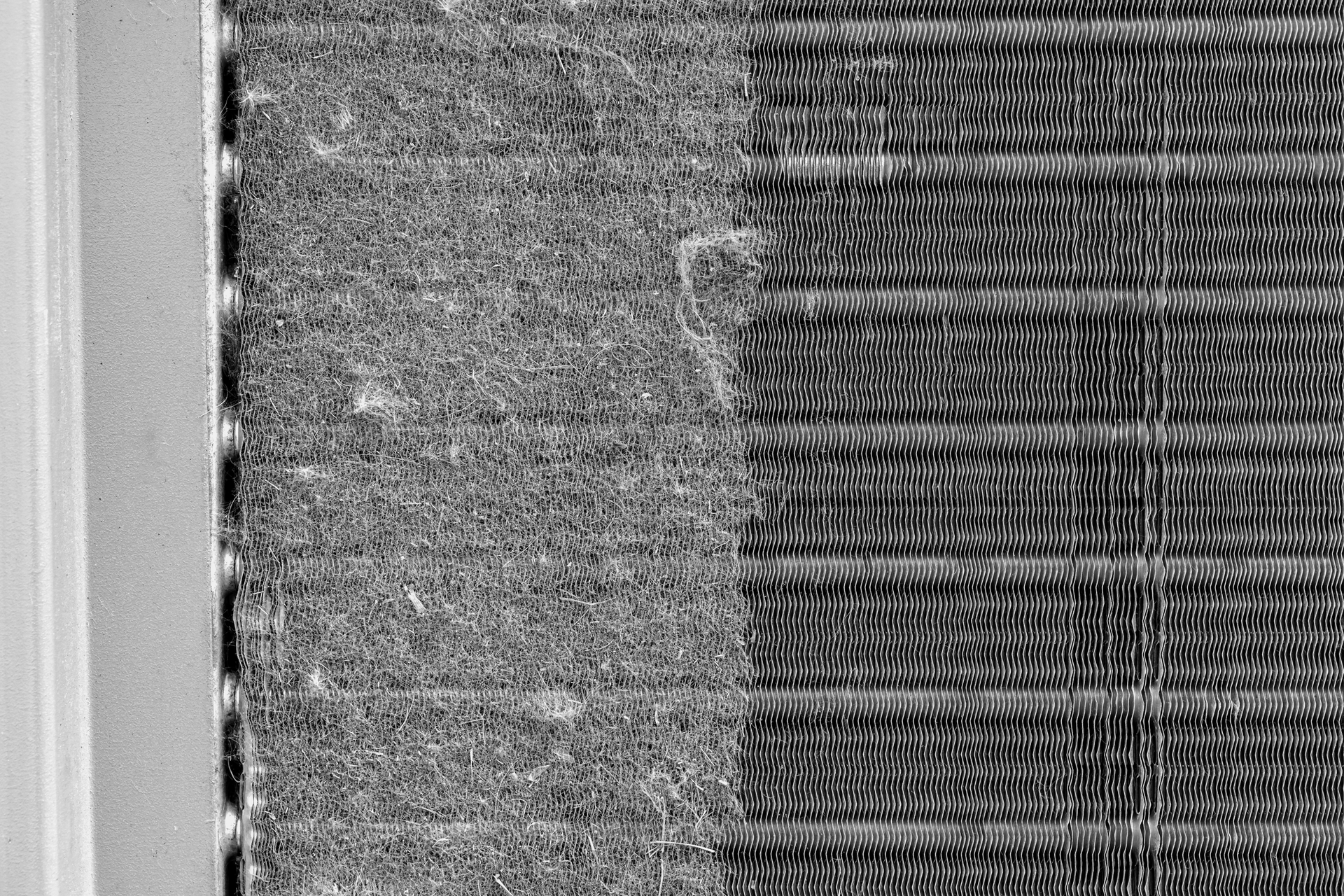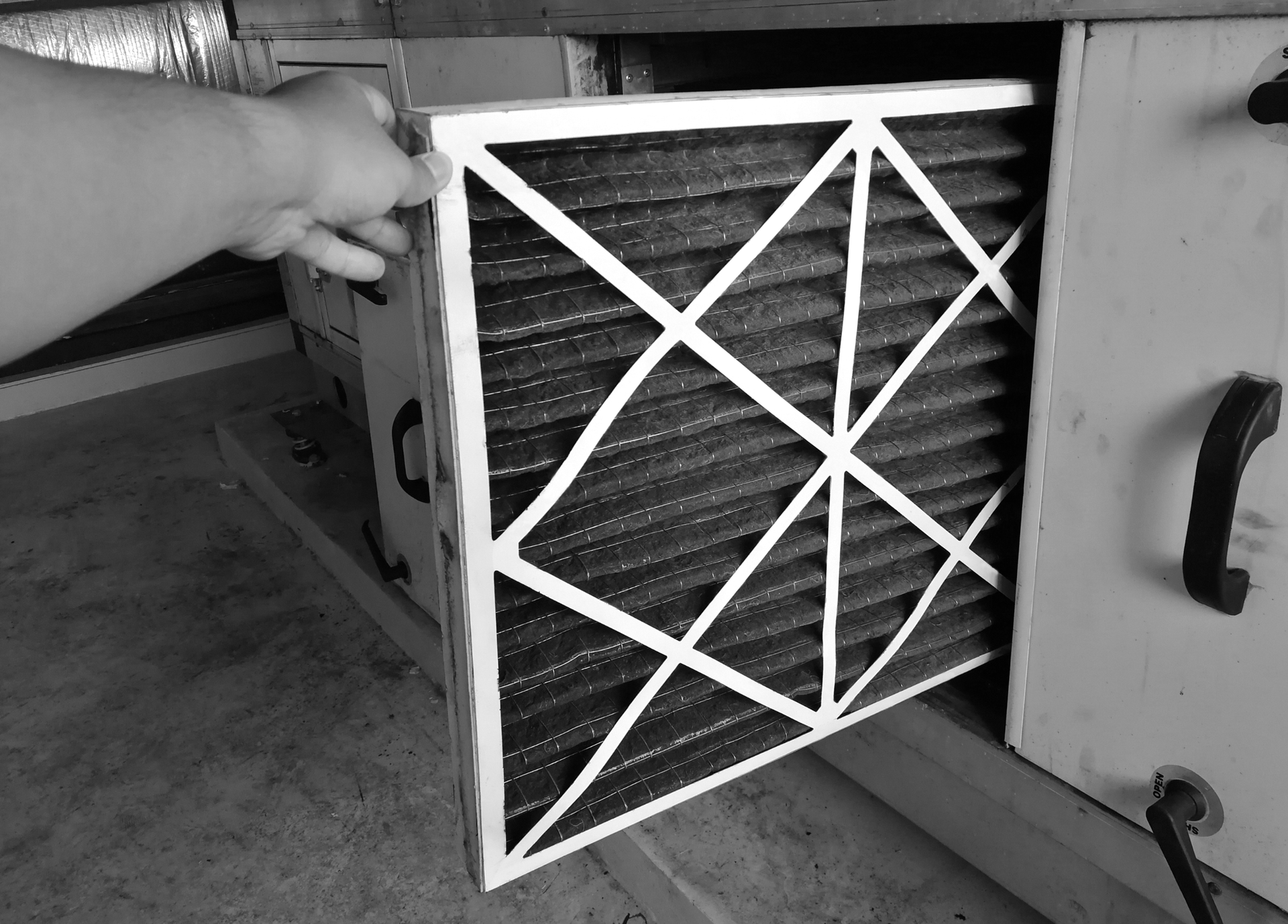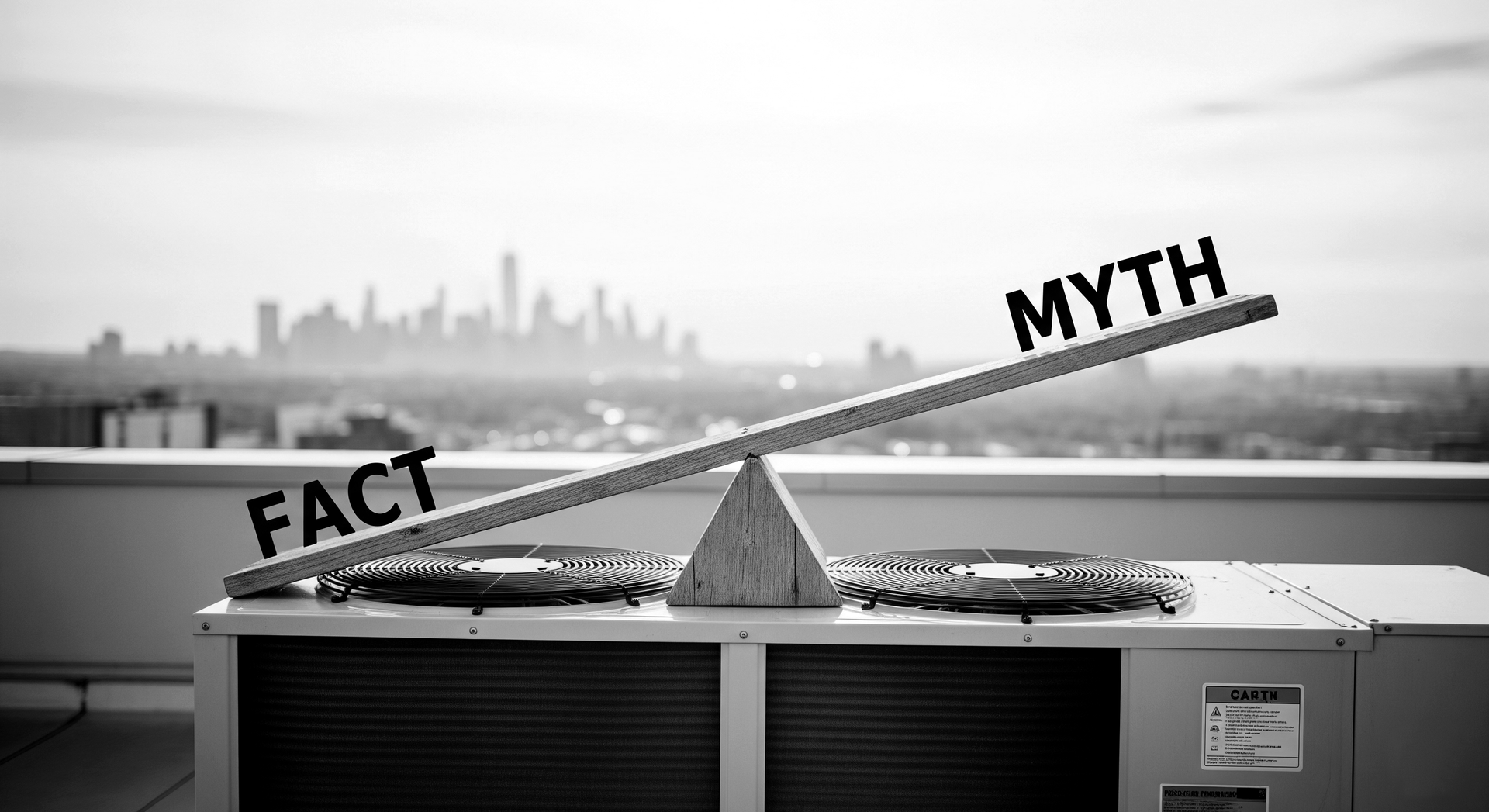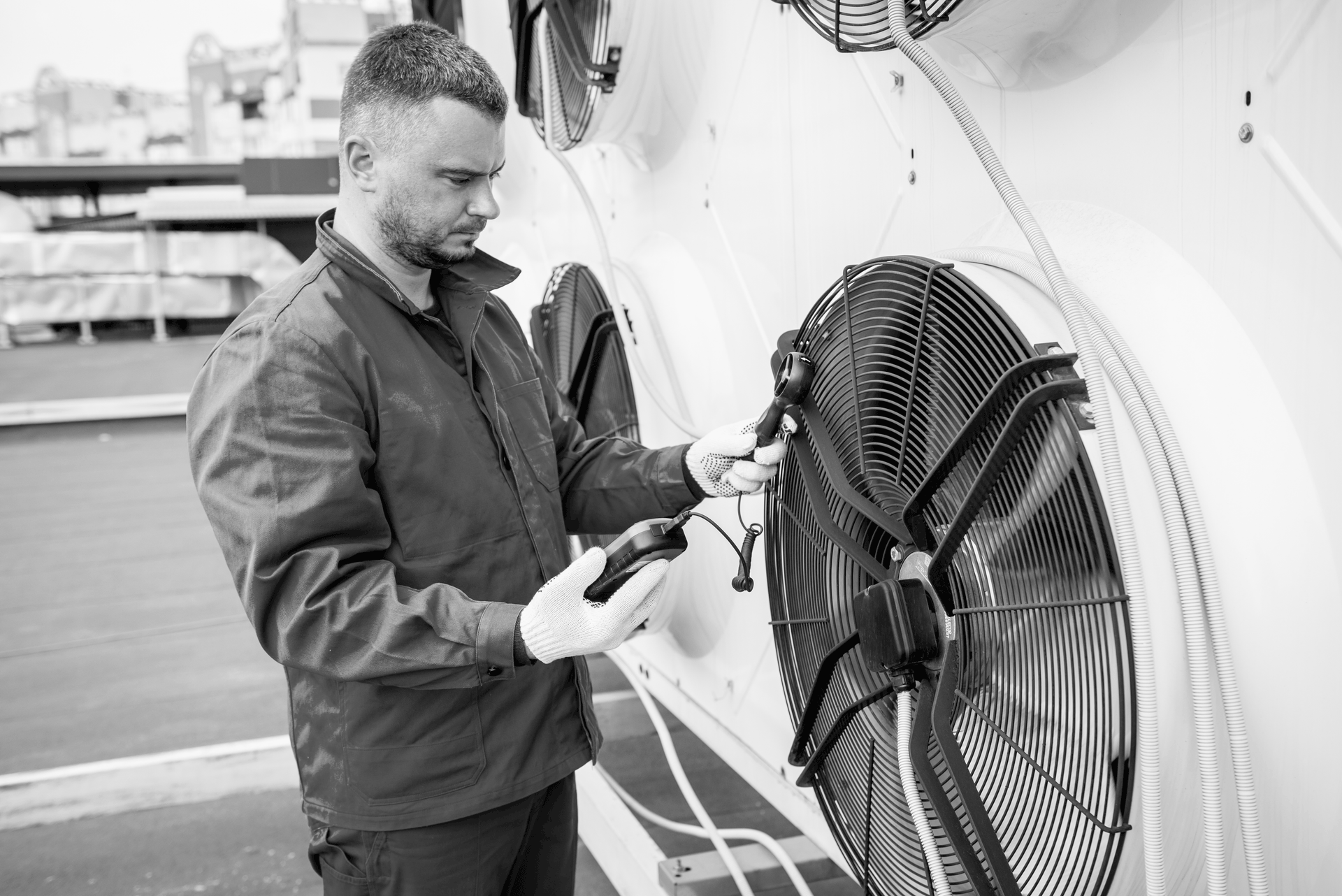Chill Out and Warm Up
How Heat Pumps Provide Year-Round Comfort
Introduction
As a facility manager overseeing HVAC systems across multiple commercial locations—whether retail stores, banks, medical offices, or other chain properties—making informed decisions about heating and cooling technology is crucial. Heat pumps have emerged as a leading solution for efficient, sustainable climate control. This article explains what heat pumps are, how they work, their pros and cons, how they compare to traditional HVAC systems, and what you need to know about their maintenance and operation.
What Are Heat Pumps?
A heat pump is a device that moves heat from one place to another using a refrigeration cycle. In commercial buildings, heat pumps can both heat and cool spaces by transferring heat from the outside air or ground into the building during winter, and reversing the process to remove heat from the building in summer. Unlike traditional heating systems that generate heat by burning fuel, heat pumps simply relocate existing heat, making them highly efficient.
How Do Heat Pumps Work?
- Core Components: Heat pumps consist of a compressor, refrigerant, and heat exchangers. The compressor circulates refrigerant through the system, absorbing heat from a source (air or ground) and releasing it where needed.
- Heating Mode: In winter, the system extracts heat from outside (even when it’s cold) and brings it indoors.
- Cooling Mode: In summer, the process reverses, moving heat from inside the building to the outdoors, functioning like an air conditioner.
- Electricity Powered: Heat pumps run on electricity, making them compatible with renewable energy sources.
How Do Heat Pumps Interact with Commercial HVAC Systems?
Heat pumps can be integrated into a building’s overall HVAC system, often working alongside air handlers, ductwork, and control systems. They deliver conditioned air through the same distribution network as other HVAC equipment, providing both heating and cooling from a single system. Some commercial heat pumps can also supply hot water for domestic use or hydronic heating.
How Do Heat Pumps Compare to Traditional HVAC Systems?
Heat pumps stand out for their ability to deliver more energy than they consume. Traditional HVAC systems, such as furnaces and boilers, generate heat by burning fuel, which is inherently less efficient. In contrast, heat pumps simply move heat, allowing them to achieve efficiencies up to 500%—meaning they can provide up to five units of heat for every unit of electricity used. This results in energy usage reductions of up to 50% compared to conventional systems, leading to significant cost and energy savings for large commercial buildings1.
Main Benefits of Using Heat Pumps in Commercial Buildings
- Exceptional Energy Efficiency: Heat pumps transfer heat rather than generate it, using significantly less energy than traditional systems. According to the U.S. Department of Energy, modern heat pumps can deliver three to five times more heating or cooling energy than the electricity they consume1 .
- Cost Savings: The high efficiency of heat pumps leads to substantial reductions in energy bills. Over time, these savings can offset the higher initial investment, making them cost-effective for commercial properties.
- Environmental Benefits: Heat pumps use electricity and often leverage renewable energy sources, resulting in much lower carbon emissions compared to systems that burn fossil fuels. According to the State of Decarbonization: Progress in US Commercial Building 2023 report2, upgrading heating and cooling systems in existing buildings to heat pumps can result in a 61% reduction in emissions (31% from operational efficiency and 94% from embodied emissions savings).
- Dual Functionality: Heat pumps provide both heating and cooling in a single system, simplifying operations and maintenance.
- Improved Indoor Air Quality: Many commercial heat pumps include advanced filtration systems that help remove dust, allergens, and pollutants.
- Low Maintenance and Longevity: With fewer moving parts and no combustion, heat pumps generally require less maintenance and have a longer operational life—often lasting 15–20 years when properly maintained.
- Year-Round Comfort: Heat pumps maintain consistent temperatures and humidity levels, ensuring comfort for occupants throughout the year.
Potential Drawbacks or Limitations of Heat Pumps in Commercial Settings
- Higher Upfront Costs: The initial purchase and installation costs for commercial heat pumps are typically higher than for traditional HVAC systems. However, these costs are often offset by long-term energy savings and potential government incentives.
- Performance in Extreme Cold: Air-source heat pumps can become less efficient in very cold climates and may require supplemental heating to maintain comfort during extreme winter conditions.
- Space Requirements: Ground-source (geothermal) heat pumps, while highly efficient, require significant space for ground loop installation, which may not be feasible for all commercial properties.
- Electrical Load: Heat pumps rely on electricity, so buildings with limited electrical capacity may require upgrades to accommodate the system.
- System Sizing and Integration: Proper sizing and integration with existing HVAC infrastructure are critical. Undersized or poorly integrated systems can lead to performance issues and reduced efficiency.
Maintenance: How and Why
Regular maintenance is crucial for heat pump performance and longevity. Well-maintained heat pumps:
- Operate at peak efficiency, keeping energy costs low.
- Provide consistent comfort and indoor air quality.
- Experience fewer breakdowns and longer service life.
To keep heat pumps running efficiently and reliably, facility managers should ensure key maintenance tasks are performed regularly:
- Clean or replace air filters regularly.
- Ensure refrigerant levels are correct.
- Inspect and clean coils and fans.
- Check controls and electrical connections.
- Schedule professional inspections annually or as recommended.
Neglecting maintenance can lead to decreased efficiency, higher energy costs, and potential indoor air quality issues, which can impact occupant comfort and productivity.
Considerations for Facility Managers
- Climate Suitability: Air-source heat pumps are best in moderate climates; ground-source models are more efficient in colder regions but cost more to install.
- Sizing: Proper sizing is critical for performance and energy savings—work with your HVAC vendor to ensure the system matches your building’s needs.
- Integration: Ensure your heat pump system is compatible with existing HVAC infrastructure and controls.
- Budgeting: Consider both upfront costs and long-term savings when evaluating heat pump options.
Conclusion
Heat pumps offer commercial facility managers a reliable, efficient, and environmentally friendly solution for year-round climate control. By understanding their operation, benefits, limitations, and maintenance needs, you can make informed decisions that support comfort, sustainability, and cost-effectiveness across your portfolio.
Sources
1 U.S. Department of Energy, “Heat Pump Systems,” 2023:
https://www.energy.gov/energysaver/heat-pump-systems
2 State of Decarbonization: Progress in US Commercial Building 2023 report:
https://www.usgbc.org/resources/state-decarbonization-progress-us-commercial-buildings-2023
Other Interesting Articles:
https://betterbuildingssolutioncenter.energy.gov/accelerators/commercial-building-heat-pump
https://urbanland.uli.org/resilience-and-sustainability/demystifying-heat-pumps
What has been your experience with heat pumps in your commercial facilities? Share your thoughts, questions, or success stories in the comments below—we’d love to hear from you!










